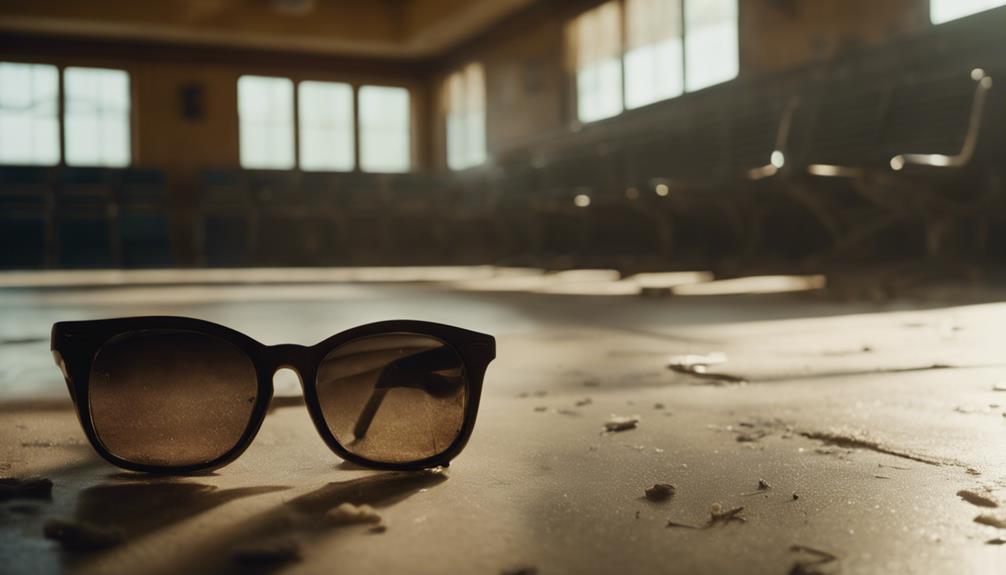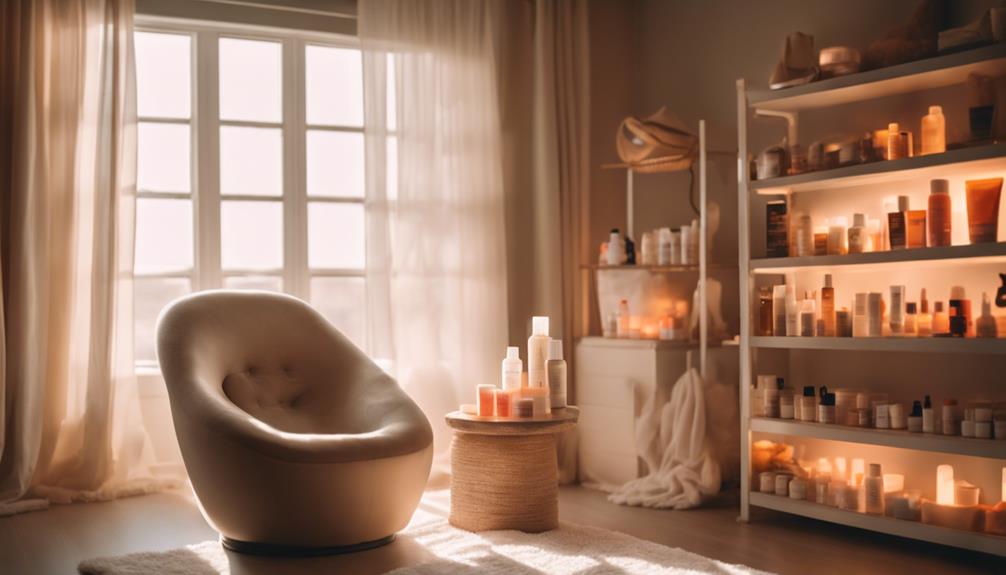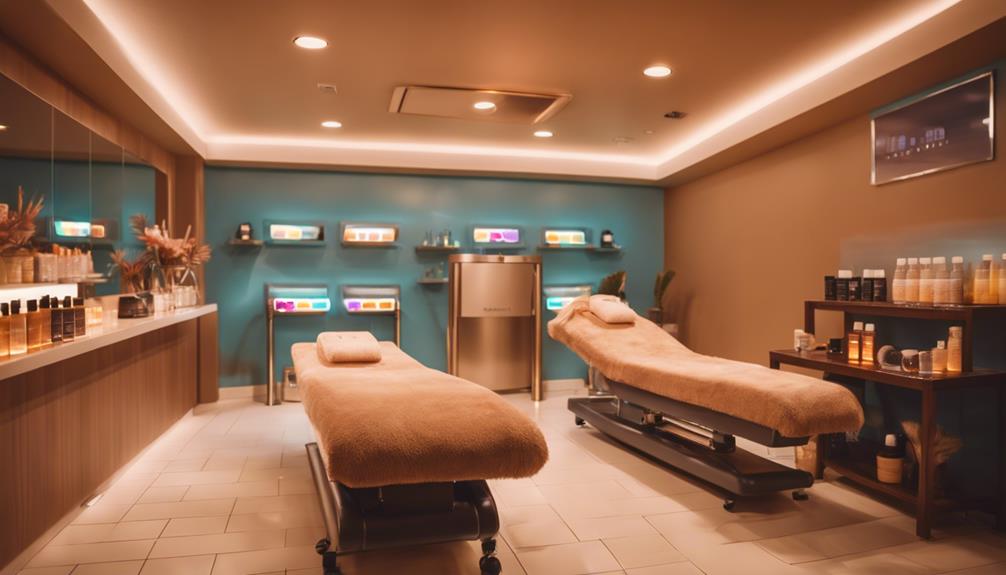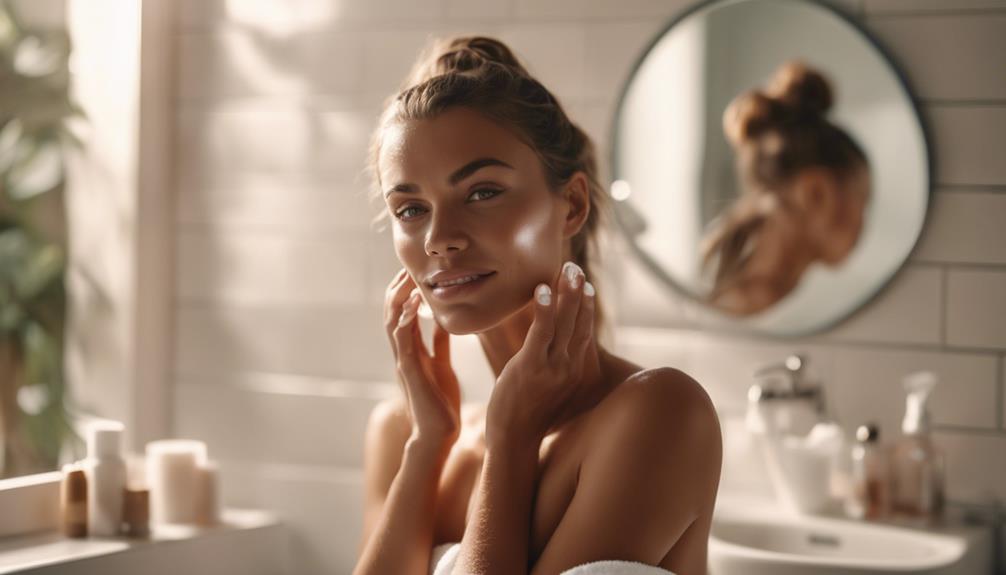Tanning beds might seem like a magical shortcut to a bronzed look, but they're more like a bad prank your skin plays on you. They crank up your chances of skin cancer and make you age faster than you can say "wrinkle cream." Plus, using them without protective eyewear is just asking for eye damage! Seriously, would you let someone blast your skin with UV rays just for a tan? Yikes! Instead, why not explore healthier alternatives that give you that glow without the worry? Stick around, and you'll pick up some safe tanning tips that'll keep your skin happy!
Key Takeaways
- Tanning beds significantly increase the risk of serious skin cancers, including melanoma and basal cell carcinoma.
- Exposure to UV radiation from tanning beds accelerates skin aging, resulting in wrinkles and leathery skin.
- Using tanning beds can cause eye damage, including cataracts and macular degeneration, especially without protective goggles.
- Starting indoor tanning at a young age raises the likelihood of developing long-term skin issues and skin cancers.
Health Risks of Tanning Beds
Why risk your health when tanning beds are linked to serious skin cancers like melanoma and basal cell carcinoma? Seriously, it's like playing a game of roulette with your skin!
Just think about it: each session exposes you to harmful UV radiation, which isn't just bad news for your skin but can also lead to early aging. You might get that bronzed glow, but at what cost?
Plus, starting young? That's like giving your skin a one-way ticket to trouble! And let's be real, who wants to deal with skin issues later?
Skin Cancer Connection

Tanning beds dramatically increase your risk of developing skin cancers like melanoma and basal cell carcinoma, making them a dangerous choice for that desired tan.
Sure, you might think you look great with that bronzed glow, but it's not worth the long-term consequences.
Here's what you should know:
- Indoor tanning boosts your chances of skin cancer considerably.
- The earlier you start tanning, the higher your risk goes.
Eye Damage Concerns

While worrying about skin cancer, many overlook the serious eye damage that can occur from tanning beds. Did you know those bright lights can actually fry your eyes?
Without proper protective goggles, you're risking cornea damage, cataracts, and even macular degeneration. Ouch! Imagine squinting for the rest of your life because you wanted a quick tan. It's not worth it, right?
Repeated tanning bed use can lead to severe pain and vision problems, which isn't exactly the glamorous look you're going for.
So, next time you hit the tanning bed, remember to wear those goofy goggles. Your eyes will thank you later!
Let's keep that vision sharp while you work on your sun-kissed glow!
Aging Effects on Skin
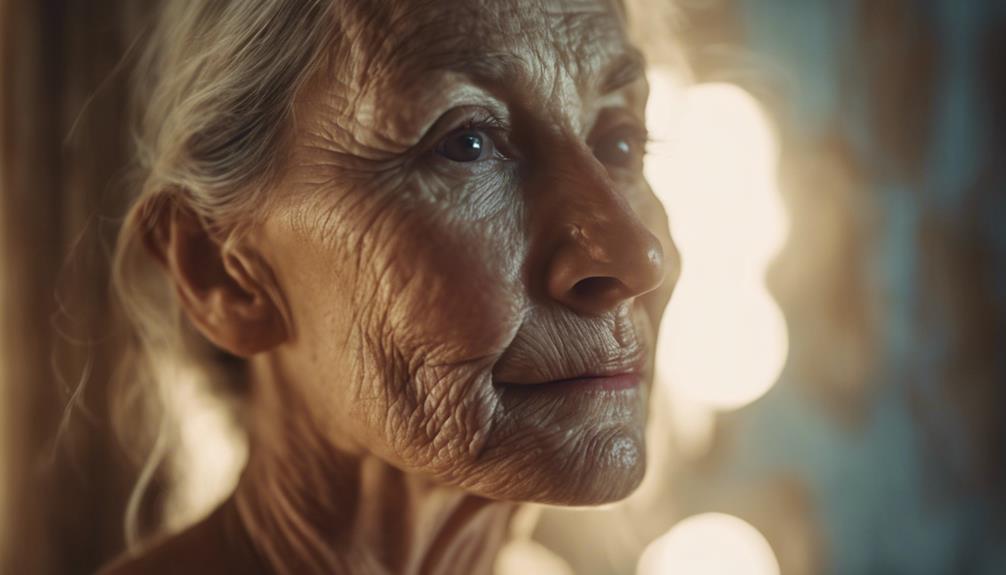
Indoor tanning accelerates skin aging, resulting in early wrinkles and a leathery texture that can make you look older than you are. Seriously, who wants that? If you're aiming for a youthful glow, tanning beds aren't your best buddy.
They mess up your collagen, leading to fine lines.
You might start spotting age spots way sooner than expected.
Stretch marks can become more pronounced, too.
Safe Tanning Practices

Using SPF 30+ sunscreen before your tanning session can greatly reduce your skin's UV damage risk. Seriously, think of sunscreen as your skin's best buddy!
You wanna limit those tanning sessions too—nobody likes overcooked skin, right? Set a timer to prevent burns and keep it chill.
Plus, don't forget to moisturize afterward; dry skin isn't cute, and you'll feel like a lizard!
If you want that bronzed glow without the UV risks, why not try self-tanning products? They're like magic in a bottle!
Remember, moderation is key, and there's no safe number of tanning sessions.
You've got this—just keep it safe, and your skin will thank you later!
Misconceptions About Tanning

Many people mistakenly believe that tanning beds are a safe way to achieve a bronzed look without the risks associated with natural sunlight.
But let's clear things up: tanning beds can be just as dangerous, if not more!
Here are some common misconceptions:
- Tanning beds aren't a “healthy” way to tan; they crank up your cancer risk.
- You won't just get a tan; you might end up with wrinkles and leather-like skin faster than you can say “oops!”
Healthier Alternatives to Tanning

Instead of risking your health with tanning beds, consider healthier alternatives that can give you a beautiful glow without the harmful effects of UV exposure.
Have you tried self-tanning lotions or sprays? They're easy to use and can give you that sun-kissed look without frying your skin! Plus, they come in various shades, so you can find the perfect match.
What about bronzing powders or tinted moisturizers? They're great for a quick touch-up!
And don't forget about good old-fashioned sunblock—apply SPF 30+ and enjoy the sun safely! You can get that glow while protecting your skin.
Frequently Asked Questions
How Do Tanning Beds Affect Skin Tone Compared to Natural Sunlight?
Tanning beds can give you a quicker, deeper tan compared to natural sunlight, but they also increase your risk of skin damage. It's crucial to reflect on healthier alternatives for achieving that bronzed look without the risks.
Can Tanning Beds Cause Allergic Reactions or Skin Sensitivities?
Like a double-edged sword, tanning beds can indeed trigger allergic reactions or skin sensitivities. If you've got a history of skin issues, it's wise to proceed with caution and consult a dermatologist before using them.
What Is the Cost Difference Between Tanning Beds and Sunless Tanning Products?
Tanning beds typically cost more per session than sunless tanning products. You'll find self-tanners and spray tans often cheaper in the long run, plus they eliminate the risks associated with UV exposure.
Are There Any Regulations on Tanning Bed Usage in My Area?
In your area, regulations often limit tanning bed access for minors, with some states requiring parental consent. Notably, about 70% of indoor tanners report using beds despite these regulations. Check local laws to verify compliance.
How Can I Safely Transition From Tanning Beds to Self-Tanning Products?
To safely shift from tanning beds to self-tanning products, start by choosing high-quality self-tanners, exfoliating before application, and gradually building color. Always test a patch first and remember to moisturize for an even finish.
Conclusion
So, the next time you think about hitting the tanning bed for that golden glow, remember: 'All that glitters isn't gold.'
Sure, a tan might look nice, but the risks to your skin and eyes just aren't worth it.
Instead, why not embrace your natural beauty or try a safer alternative?
Your skin will thank you later, and you'll save yourself from those pesky wrinkles!
Stay smart, stay safe, and rock that healthy glow!

